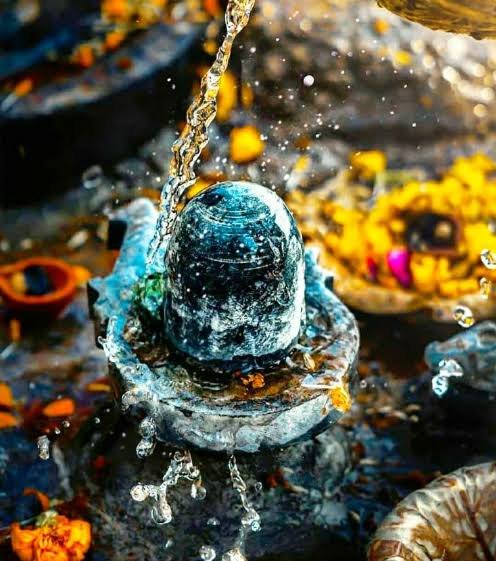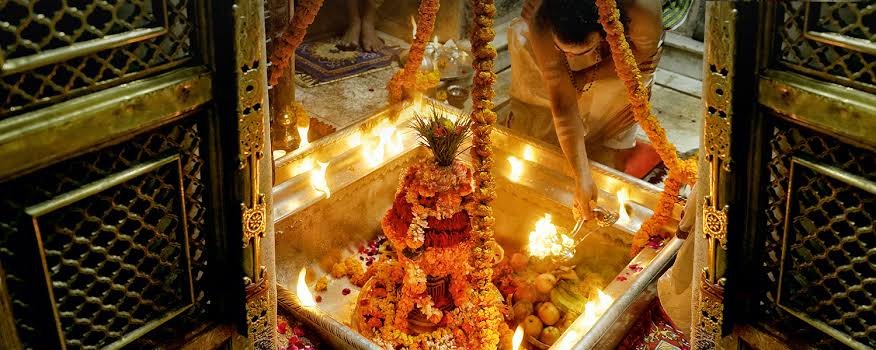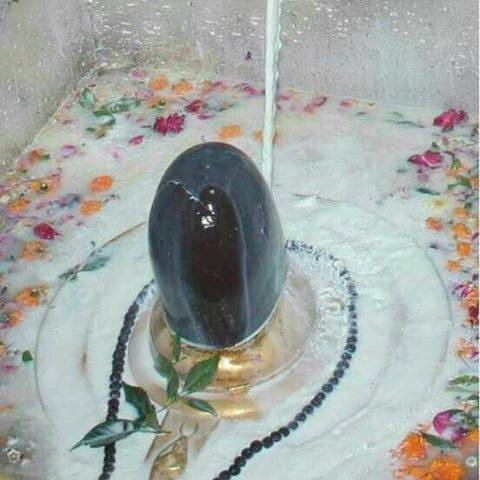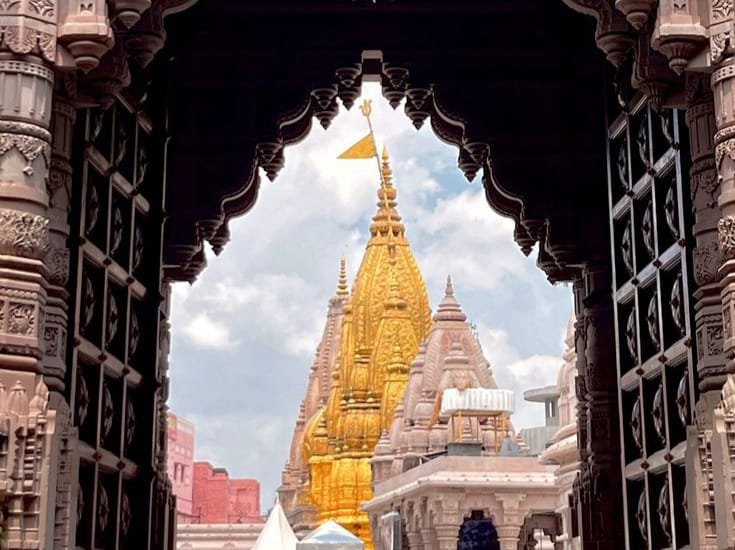Overview
The Sparsh Darshan practices at Varanasi’s Kashi Vishwanath Temple, one of India’s holiest religious sites, have recently changed significantly. Temple officials have redesigned the system to provide a more secure and well-organized experience for guests after an incident in which devotees fell into the sacred vessel (argha) inside the sanctum (garbhagriha). The temple’s continuous efforts to uphold order and improve the spiritual experience of the millions of visitors each year include this action.

We examine the latest renovations at Kashi Vishwanath Temple, their causes, and the ways in which devotees can now partake in the revered Sparsh Darshan rite in this extensive guide. We will also explore how the Jaladhari, a vital component of the temple’s worship infrastructure, has been redesigned and how this has an impact on the temple’s everyday operations and spiritual rituals.
The Kashi Vishwanath Temple’s Historical Significance
The Kashi Vishwanath Temple is more than just a house of worship; it is a representation of history, dedication, and spirituality that has long served as the foundation of Hindu culture. The temple is devoted to Lord Shiva, sometimes referred to as Vishwanath, the “Lord of the Universe,” and is situated in the sacred city of Varanasi (Kashi). The temple has a long history and has undergone multiple reconstructions as a result of invasions and damage, most notably during the Mughal dynasty. The temple has continued to be a symbol of faith and fortitude for Hindus worldwide in spite of these difficulties.
An essential component of the temple’s spiritual experience has been the Sparsh Darshan tradition, in which followers touch the shrine or sacred symbol of the deity. Devotees might experience a direct connection with Lord Shiva through this ceremony, which enhances the significance of their visit. However, the temple management now faces a difficult problem in safely and effectively administering the Sparsh Darshan due to the exponential growth in visitors over the years.
The Event That Led to the Shift
An tragic tragedy happened during the Sparsh Darshan at Kashi Vishwanath Temple on October 7, 2024. The argha is a sacred receptacle used to collect the holy water poured over the Shiva Linga. Two devotees slipped and fell into it. In addition to causing mayhem in the sanctum, this occurrence sparked worries about the devotees’ safety and the rites’ holiness.
The temple administration responded quickly, suspending the Sparsh Darshan for five days in order to review and enhance the protocols. The primary objective was to maintain the spiritual sanctity of the garbhagriha (sanctum) while making sure that such incidents would not recur. Following careful consideration and preparation, new rules were proposed and are currently in effect to guarantee a more secure and tranquil setting for worshippers.
New Guidelines for Sparsh Darshan
Now that the Sparsh Darshan ceremony has resumed, there are more stringent guidelines in place. The following are the main modifications that have been made:

- One-by-One Entry: From now on, devotees will be permitted to enter the sanctum individually. The goal of this approach is to lessen crowding and guarantee that every worshipper can have a quiet, undisturbed time with the god. Additionally, it reduces the possibility of mishaps like slipping into the argha.
- Fixed Argha Placement: Within the sanctum, a permanent argha (holy vessel) has been assembled. Devotees are less likely to fall into the argha because to this improved design, which guarantees that it stays firmly in place at all times. Now that the argha is 1.5 feet away from the Shiva Linga, worshippers can offer their prayers without coming into contact with the holy water vessel.
- Regular Duty Rotation for Security Staff: A new duty roster for the security guards positioned inside the sanctum has also been put into place by the temple administration. In order to keep them alert and receptive to the needs of the devotees, their shifts will now alternate every two hours. The Sparsh Darshan process’s overall security and effectiveness are intended to be improved by this modification.
- Enhanced Devotee Management The temple has implemented more stringent crowd management procedures in order to preserve order. Devotees must abide by the rules set forth by temple employees and follow the approved routes. This keeps the sanctum from becoming overcrowded and guarantees a steady stream of devotees.
Jaladhari Redesign: A Significant Structural Improvement
The Jaladhari, the hallowed building that houses the holy water offered to Lord Shiva, has undergone major alterations by the temple officials in addition to the Sparsh Darshan process. The Jaladhari is customarily taken down and put back in place at significant ceremonies and occasions, but this procedure has created logistical problems and interfered with the regular flow of devotees.

A new, permanent Jaladhari design has been designed to solve this problem. There will be no need for regular removal and reinstallation because this construction will stay set in place. The renovated Jaladhari enhances the sanctity of the garbhagriha and is more aesthetically pleasing and long-lasting than the original design.
In addition to improving the temple’s general operation, the new Jaladhari shields the Shiva Linga from possible harm brought on by repeated handling. Now, devotees can pray uninterrupted, while temple employees can concentrate on preserving the temple’s spiritual ambiance.
How the Modifications Affect Devotees
Many devotees have embraced the latest improvements at Kashi Vishwanath Temple, viewing them as an essential step in guaranteeing a more secure and well-organized place of worship. However, because of the fixed argha location and one-by-one admittance method, which restrict physical contact to the Shiva Linga, some have voiced worries about the diminished access to the deity.
The majority of devotees value the temple’s attempts to put their safety first while upholding the integrity of the rites in spite of these worries. Because the streamlined procedure enables a faster and more effective flow of worshippers, the new rules have also assisted in lowering the wait times for devotees.
The temple provides alternate ways to connect with Lord Shiva for those who are unable to participate in the Sparsh Darshan because of time or physical limitations. These include Jhakhi Darshan, which involves viewing the deity from a distance, and taking part in the various aarti (prayer) ceremonies that are held throughout the day.
Technology’s Function in Temple Operations Management
The administration of the Kashi Vishwanath Temple has also started integrating technology into its operations in an attempt to enhance the entire experience for worshipers. Devotees can now organize their trips, reserve darshan slots, and get real-time details about temple events with the use of digital ticketing systems, smartphone apps, and online platforms.

Particularly during the busiest pilgrimage seasons and festivals, these technological developments have been essential in controlling the sizable crowds who congregate at the temple. The temple can better control the flow of visitors and avoid crowding inside the sanctum by letting devotees reserve their darshan in advance.
Furthermore, the security and safety of the temple employees as well as the devotees have been improved by the installation of monitoring systems and video cameras. These precautions further enhance the general safety and tranquility of the temple setting by guaranteeing that any possible problems are promptly found and resolved.
Sparsh Darshan‘s Spiritual Nature and Development
Devotees find great spiritual value in the Sparsh Darshan tradition because it symbolizes a close and intimate relationship with Lord Shiva. Devotees think they can absorb heavenly energy and obtain benefits for themselves and their families by physically touching the shrine or sacred symbol.
The Sparsh Darshan ritual has changed over time to adapt to the shifting dynamics of temple management and safety concerns as the number of devotees visiting the temple has increased. The temple’s dedication to maintaining the spiritual significance of the ceremony while guaranteeing the security and welfare of every guest is reflected in the recent modifications, despite the fact that they may appear to be a break from tradition.
The improved Sparsh Darshan and Jaladhari processes are a part of a larger attempt to enhance the temple’s infrastructure without sacrificing its rich spiritual and cultural legacy. These modifications demonstrate the temple’s flexibility in meeting the demands of its followers without compromising the sacredness of its rites.
Final Thoughts
With its updated Jaladhari and new rules, the return of Sparsh Darshan to Kashi Vishwanath Temple represents a major turning point in the temple’s continuous attempts to improve the worship experience for its millions of followers. The temple has effectively overcome the difficulties caused by congestion and logistical problems by putting safety, effectiveness, and spiritual holiness first. This has allowed devotees to continue experiencing the divine connection with Lord Shiva in a calm and well-organized way.

These modifications are a reminder of the significance of striking a balance between tradition and modernity as the temple develops further. With its enduring spiritual significance, the Kashi Vishwanath Temple continues to be a haven of devotion and faith, accepting anybody who comes to seek Lord Shiva’s blessings.
For those who intend to go to the temple
To create a seamless and significant worship experience, it is imperative to understand the new Sparsh Darshan processes and adhere to them. The temple guarantees that Kashi Vishwanath’s spiritual essence will endure for many centuries to come with these renovations.






